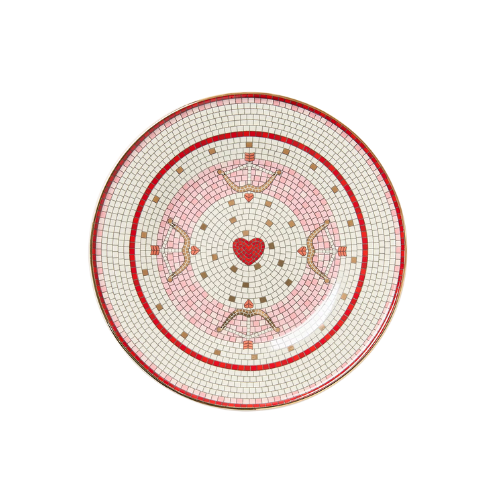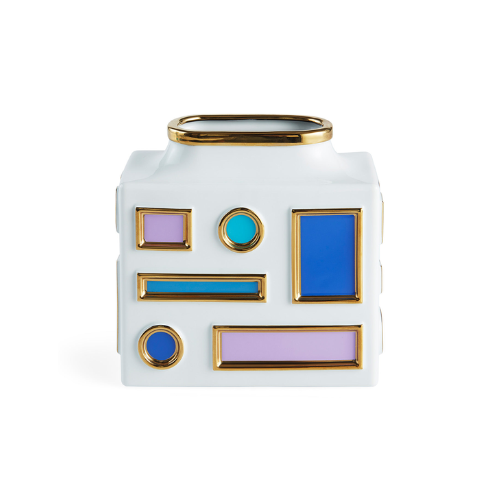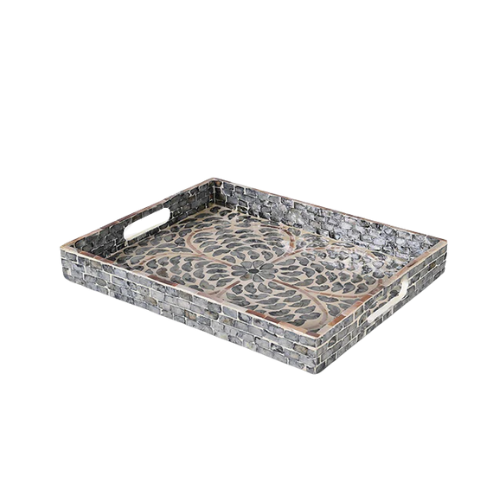This 'Ancient Roman' Flooring Trend Is Having an Unexpected Revival in 2025 — With a Fun, Modern Twist
From the floor of the Vatican to your bathroom — our new favorite tiling trend has history on its side
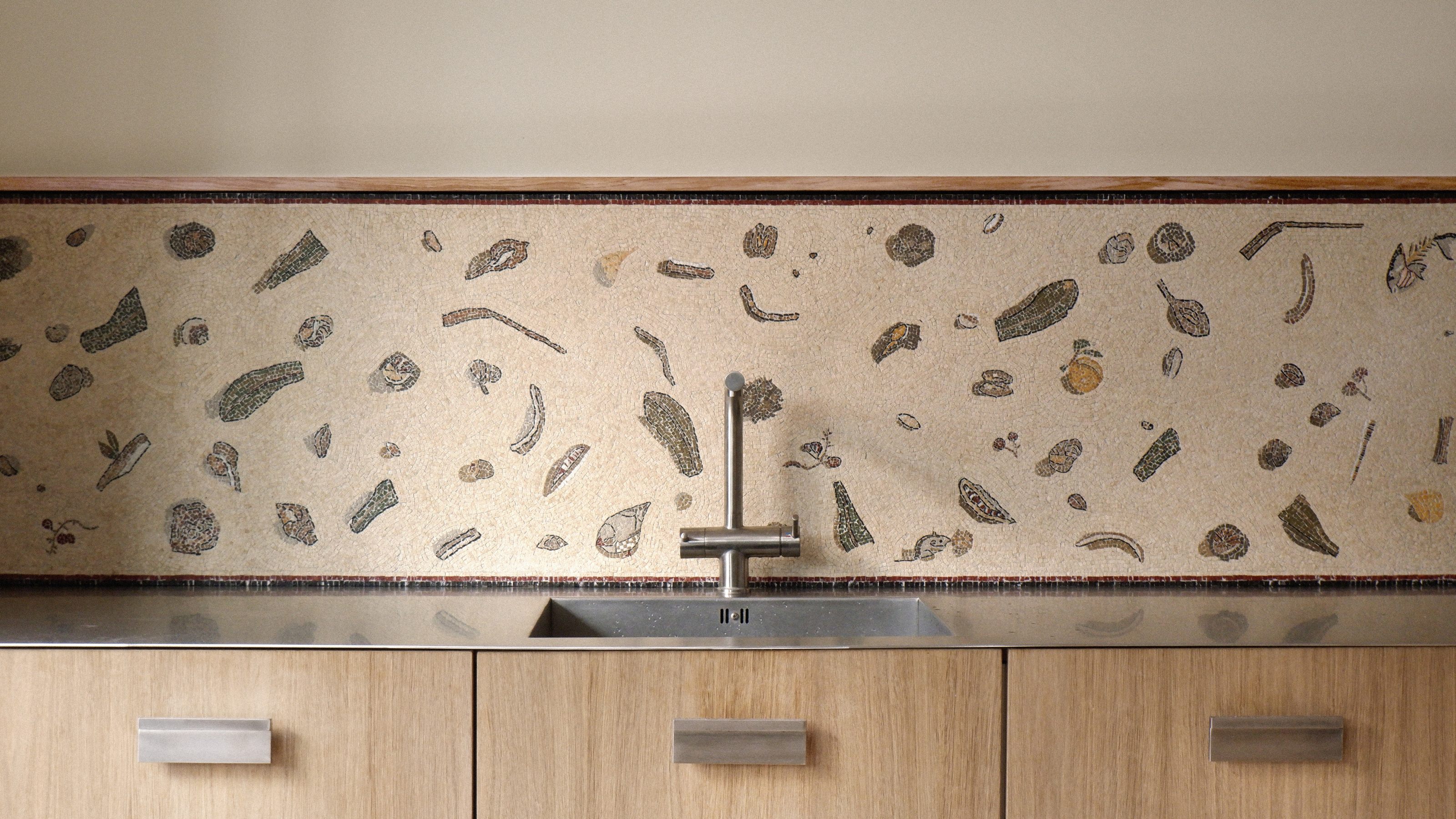
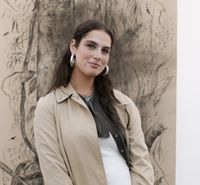
They say all trends take inspiration from years past, but this one takes things one step further. The 'Unswept Floor', or Asàrotos òikos is a style of tiling that can be dated back to Ancient Greece. However, it is more commonly connected to the Ancient Roman civilization, due to the surviving mosaics displayed in the Vatican Museums.
A smorgasbord mosaic of various small motifs, grouped as if by chance, the style evokes an image of a raucous party, and the mess that remains after. It was a celebration of hedonism, of celebration, and the beauty that can be found in the messy aftermath. However, instead of crumpled plastic cups and smashed bottles, here you'll find delicate, ornate depictions of stoned fruits and animal bones.
Despite its ancient origins, this tiling trend is just as applicable today. In fact, there is something strikingly modern about the collage-like look of this style.
As mosaic artist, Helen Miles, explains, "The unswept floor design is a perfect one for contemporary interpretation. In a consumer culture where things are routinely discarded, it can be reimagined as a nod to our throw-away habits."
Many of our favorite mosaic artists have adopted and adapted this approach to make for eye-catching, statement-making home features, and now, they've shared their thoughts on the flooring trend with us.
What Is Unswept Floor Tiling?
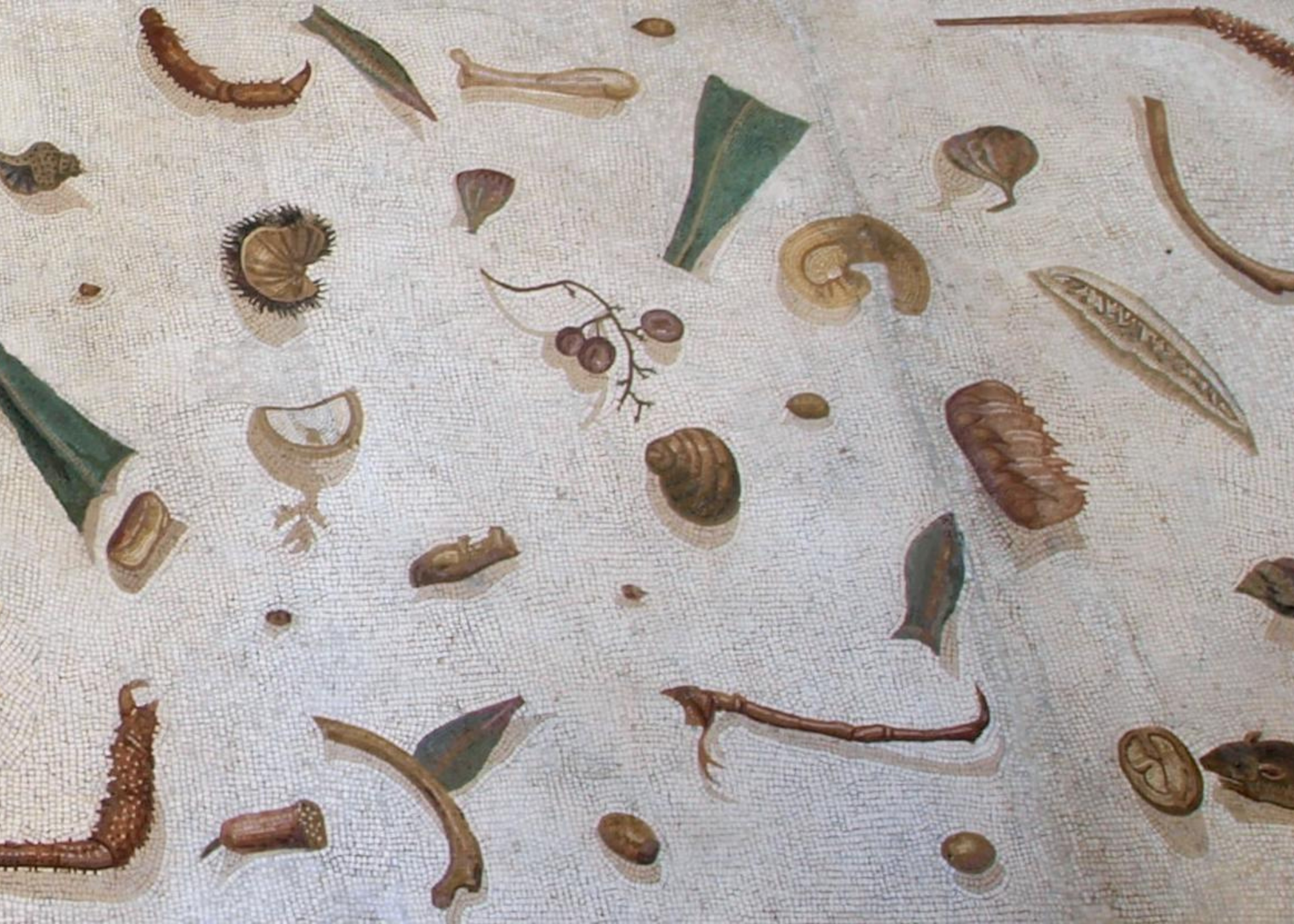
"A wish bone, a fish skeleton, torn leaves, vegetable peel, a few grapes left on a sprig, a crab claw, and half a sea urchin are part of the mosaic floor which was discovered at a villa in Rome," says Helen Miles.
For our understanding of this Ancient tiling style, we have the epic Natural History to thank. The largest surviving work from the Roman Empire, this encyclopedic account written by Pliny the Elder contains one single reference to this mosaic type.
"[Sosos] laid at Pergamon what is called the asarotos oikos or 'unswept room,' because on the pavement was represented the debris of a meal, and those things which are normally swept away, as if they had been left there, made of small tessera of many colors," wrote Pliny.
The Livingetc newsletters are your inside source for what’s shaping interiors now - and what’s next. Discover trend forecasts, smart style ideas, and curated shopping inspiration that brings design to life. Subscribe today and stay ahead of the curve.
Here, Pliny was describing the dining room floor of Emperor Hadrian's Aventine Hill villa, which can now be viewed in the Vatican's Gregoriano Profano Museum. Created in the second century B.C by Sosos of Pergamon, this complex design utilized tiny pieces of glass and richly colored marble for a vibrant, sparkling appearance. Against the white background, one can pick out cherries, lobster claws, and even a singular mouse, scampering around, searching for remains. The artistic mastery of the creator is clear throughout the design, though the gentle shadowing surrounding each item is a particularly impressive addition.
"Wealthy Romans would have had these mosaics in their triclinium (fine dining room). The mosaic shows all the food and goods that have fallen off a Roman banqueting table," explains Mitch Robertson, from Canterbury's Roman Museum.
"It demonstrates that the owners are wealthy, can afford all manner of lavish foods, and know how to put on a good party," he continues, "Excessive banquets were frowned upon in Rome, and even legislated against, having an unswept floor subverted this. It could also serve as a Memento Mori with animal bones and Roman rubbish being exposed, showing things don't last forever!"
The concept of the Memento Mori refers to the visual reminders of the fragility of life and the inevitability of death that can frequently be found in classical art, including the bones and shells present in this work. This conceptual combination of a celebration of life, interlaced with various references to death, is typical of Roman artworks.
Though these mosaics were not limited to Roman civilization. As Joseph Meidan, from the design studio Bureau 411, comments, "The first unswept floor tiling I saw was actually the one in Chateau de Boudry in Switzerland."
This example, from the 3rd-4th century A.D., features a similarly eclectic mixture of items strewn across the floor, though, instead of a mouse, you can find a prowling cat, nibbling its way through the various fish bones.
Why Do The Experts Love It?
So, if this style has been around for centuries, why are we seeing a resurgence of it now? What is it about this ancient design that is resonating so deeply with artists working today?
"I've always loved classic design, but was particularly drawn to this concept due to its playfulness," comments mosaic artist Amy Exton.
"Lots of classic mosaics feature mythological scenes, and take a level of classical education to be able to decipher, whereas the idea of the Unswept Floor is accessible to all," she explains. "It's also highly customisable, making it a great choice for contemporary variations."
This idea of the accessibility of the design rings particularly true. Compared to the other art forms of the classical world, which are generally rich with references to lost or forgotten works and often draw on a broad range of esoteric knowledge, the unswept floor is an idea familiar to all.
There is also, as Amy notes, an inherent playfulness to this trend, an ancient example of the modern dopamine decor we all love so much.
"My mosaics don’t always refer directly to Roman designs, but I find ancient mosaics to be a constant source of inspiration and delight," says mosaic artist, Helen Miles, "The wry humour of the unswept floor and its play on the transience and fragility of our lives is as relevant now as it ever was."
The underlying depth of this style, the transience of life that Helen describes, is a modern interpretation of the concept of Memento Mori, which is as impactful today as it was thousands of years ago. There is a sense of fleetingness in these designs — an almost ephemeral quality despite their permanence.
"In general, we find the beauty in raw things and situations before they are completely done," notes Joseph.
He continues, saying, "In the case of the unswept floor mosaic, I like the appeal of something that demands meticulous but captures a 'random' instant. More like a photo."
So, to show just how much these artists love the design, we've selected some of our favorite interpretations for you.
1. Bring the Unswept Floor to Your Kitchen Walls
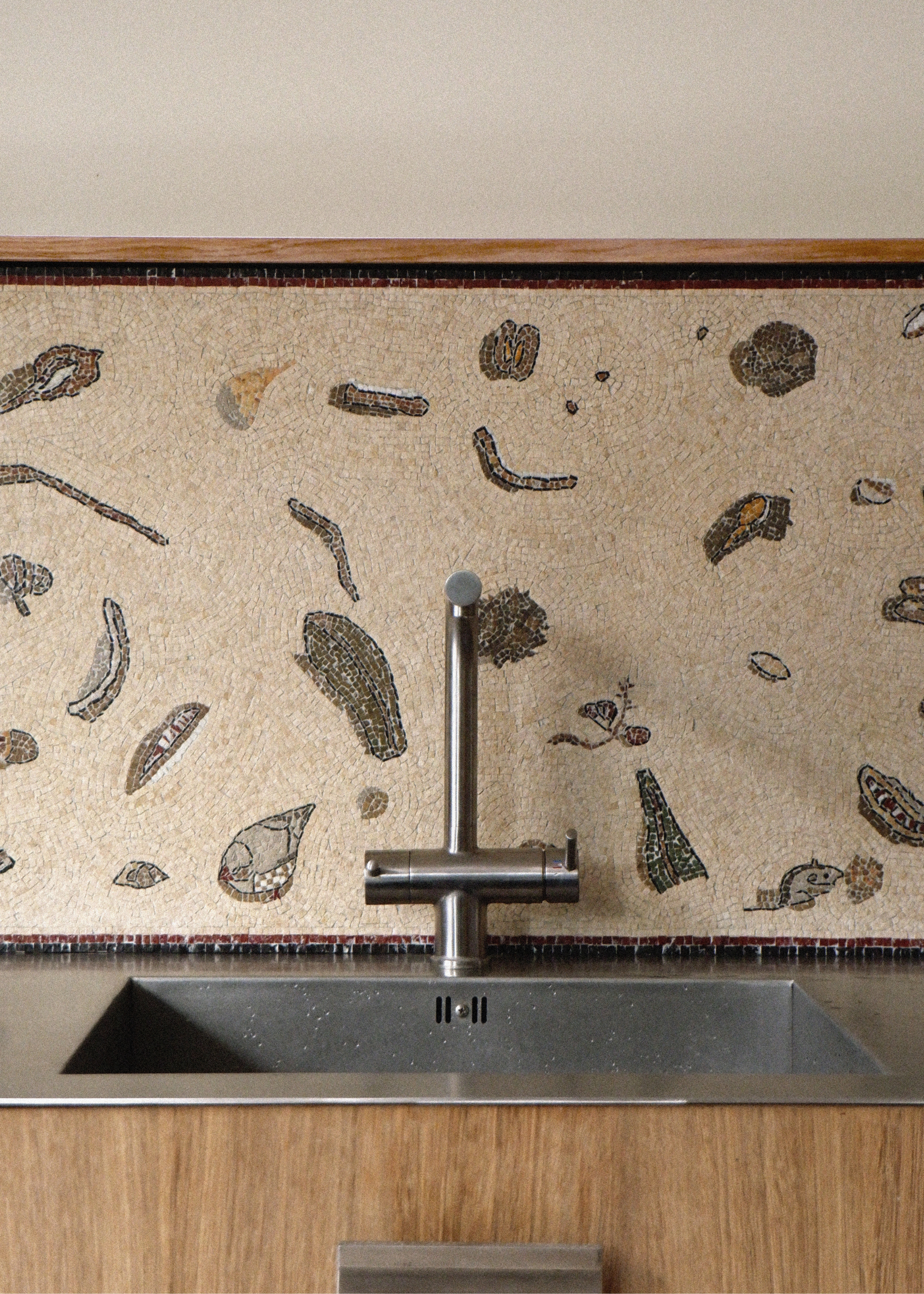
The team at Bureau 411 reinterpreted the ancient style as a splashback in an otherwise modern kitchen design.
Who said that this trend had to be confined strictly to our floors? Joseph Meidan and Dror Tshuva from design studio Bureau411 show that this tiling style is just as striking when used on the walls, for a creative spin on this classic design.
"During the early design drafts, we explored several themes for the mosaic. Eventually, we settled on the unswept floor — a classical motif that felt fitting for a kitchen context, and whose composition of scattered objects on a white background offered flexibility for adaptation," explained Dror.
A unique interpretation of a tiled kitchen backsplash, this custom-made mosaic work brings a whole new feel to this kitchen design.
"We had the idea of doing it for a few years, actually, our approach to design and architecture is usually very modern and industrial, and we wanted to give this contrast in this situation," comments Joseph, "Of course, as for rooms, the kitchen fits it best. We framed it as the backsplash of an inox countertop and framed it with a wooden shelf."
Against the modern sleekness of the stainless steel counters and wooden cabinetry, this ornate addition brings a touch of classical beauty that works seamlessly alongside the modern features.
"Personally, I thought it was a worthy gesture to place a floor on the wall. If you're going to cite something so canonical, you might as well have a sense of humor about it," says Dror.
But although the location had changed, Dror and Joseph did not veer too far from tradition when selecting the motifs for this design.
"We kept the grand motif of food items, obviously. We kept some items we liked from the original and added some other food items that we thought would add to the overall mosaic’s appearance," they explain, "For example, some Pringle chips and apricots. Other than that, we decided to also add a bird that we saw on the street one day while working on the project — we found it really cute. We immediately thought it should be the representation of our studio in the mosaic. A mascot, of sorts."
This is one of the most appealing parts of this design style: the endless possibility for customisation, making your final result as personal as you please.
Founded by Assi Joseph Meidan and Dror Tshuva, Bureau411 is a design and architecture studio dedicated to exploring aesthetics that reveal the structural and material truth of objects and spaces across various scales and scopes of work. The studio’s projects blend creative expression with architectural purpose, resulting in spaces and objects that strive to be both visually compelling and functional.
2. A Unique Pantry Floor
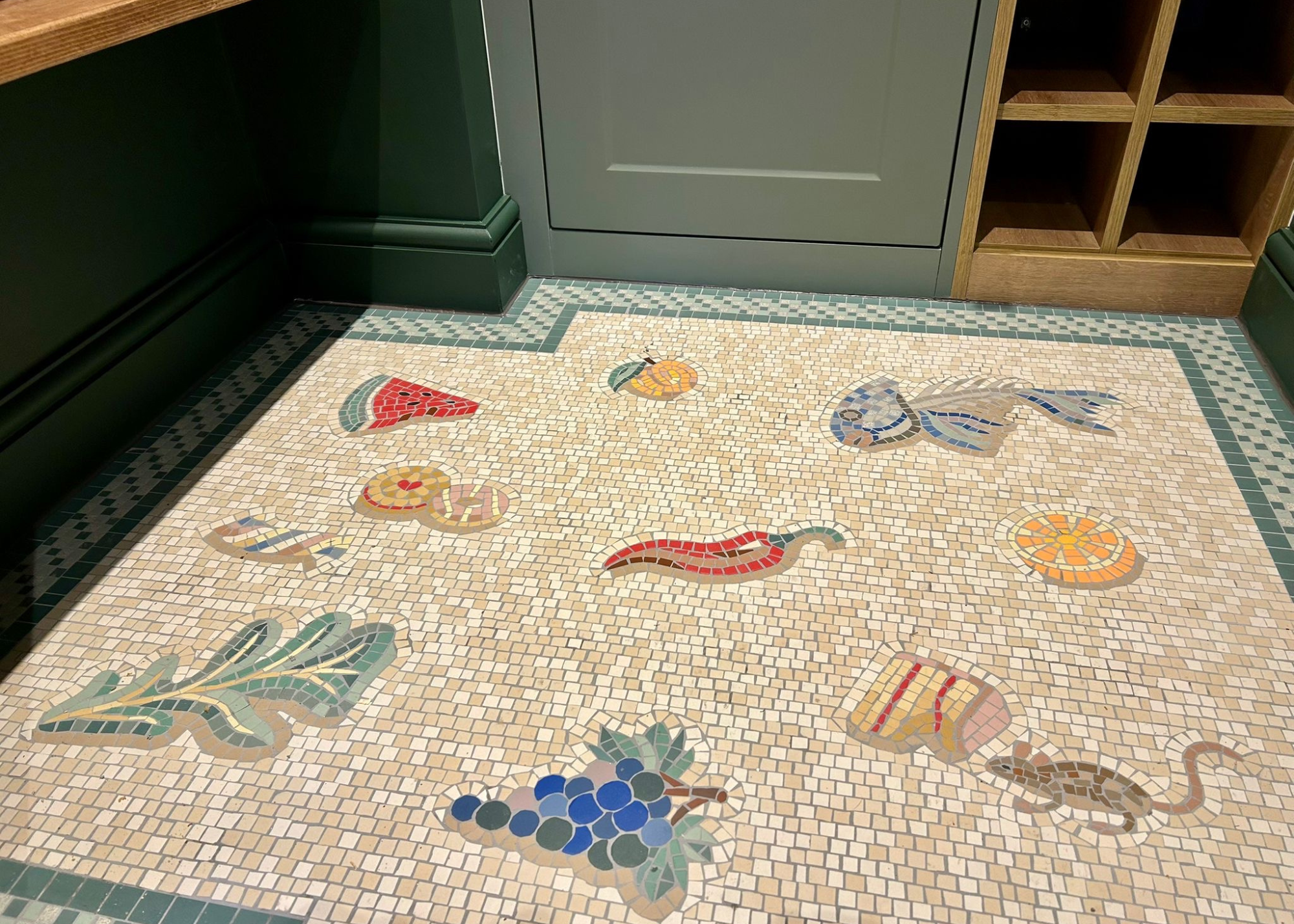
This design was inspired both by classical tradition, and the young family living in the property.
Having studied at the London School of Mosaics, Amy Exton was already very familiar with this style of tiling before beginning this kitchen pantry floor project.
"The client gave me an open brief for this mosaic, so because it was being installed in the kitchen pantry, and I knew the clients had an interest in classical history, it was the perfect opportunity to design my own Unswept Floor," says Amy.
Having finally found an opportunity to recreate this style, Amy drew on both the classical tradition she had studied and the personal life of the clients she was designing this piece for.
"The clients loved the idea, and after an initial design consultation to find out what they wanted to be incorporated into the floor, I started putting their design together, drawing inspiration from classic Roman and other contemporary Unswept Floors."
She continues, saying, "I had a consultation with the clients along with their children, as they wanted the whole family's ideas to be incorporated into the design. The main input from the children was that they wanted all of the food to have been nibbled by a mouse, so I incorporated a little mouse nibbling on a slice of cake. The mouse was often featured in original Roman Unswept Floors, doing just that, so it was a great addition."
This is an excellent example of the unwavering appeal of this style. Just as the mouse was a staple addition in the surviving examples from Ancient Rome, it evokes the same playful feeling today.
"I wanted the overall aesthetic of the mosaic to be classic and traditional, but also wanted to include some more contemporary elements without it becoming a pastiche," says Amy.
"The fish bone, mouse, and fruits and vegetables are all classic additions, then because it's a young family home, the addition of the party food (Party Ring, Jammy Dodger, Flump marshmallow, and slice of cake) added a fun element for the kids," she explains.
Not only does this make the design feel more personal to its surroundings, but it also mimics the hedonistic undertones of the original works.
"Classic Unswept Floor mosaics were designed to give the illusion that the food had been discarded across the floor of the dining room after a lavish feast, so the inclusion of party food also gave a nod to the original concept of the design," notes Amy.
Amy graduated from CSM in 2012 with a BA in fine art, specialising in immersive installations and writing her thesis on the fandom of Elvis Presley. After relocating to Margate in 2016 Amy launched Margate Location House, a shoot location, boutique holiday-let and artist residency space. Acting as her very own personal set, the house has been continually transformed over the past eight years, and has helped launch a career in interior design. Amy has since been classicaly trained at the prestigious London School of Mosaic, where she's been taught the traditional Roman, Byzantine and neo-classical methods, alongside an in-depth history of mosaic.
3. A One-of-a-Kind Wedding Gift

"I came across the famous unswept floor design at the Vatican Museums years ago when I first became interested in mosaics. Everything about it appealed to me: the concept, the design, and the things represented," says Helen.
"This design was made as a wedding mosaic and includes various things which represent the couple and the things they like to do," explains Helen.
Taking the customizable and personal aspect of this design, and taking it to a new level was the basis of this project, making the ultimate wedding gift.
"The pen, because she is a teacher. The mouth guard, because he works in sports management. The key was for their future home, the Dorito refers to an anecdote known to the family, and the charger for their reliance on technology," she continues.
These deeply personal, even anecdotal references are what make this design so special. It's this kind of element that can turn a house into a home, and is what makes it such an appropriate gift for a newly married couple.
"I gathered information about the couple from relatives and friends and then worked out which objects would best represent them and their future life, and which would work well in a balanced design. It was important to find items that had wide significance, so that they would be equally important decades down the line."
Helen trained in the art of mosaic making with master crafts people in Greece who used traditional methods with a focus on Byzantine iconography. Later, she became interested in Roman mosaics and now makes contemporary pieces for interior and exterior spaces.
So, whether you're a classics nerd or just a design lover, we can see this trend appealing to a wide range of people. However, if you prefer a more contemporary aesthetic, we also love this modern tile-drenching look.
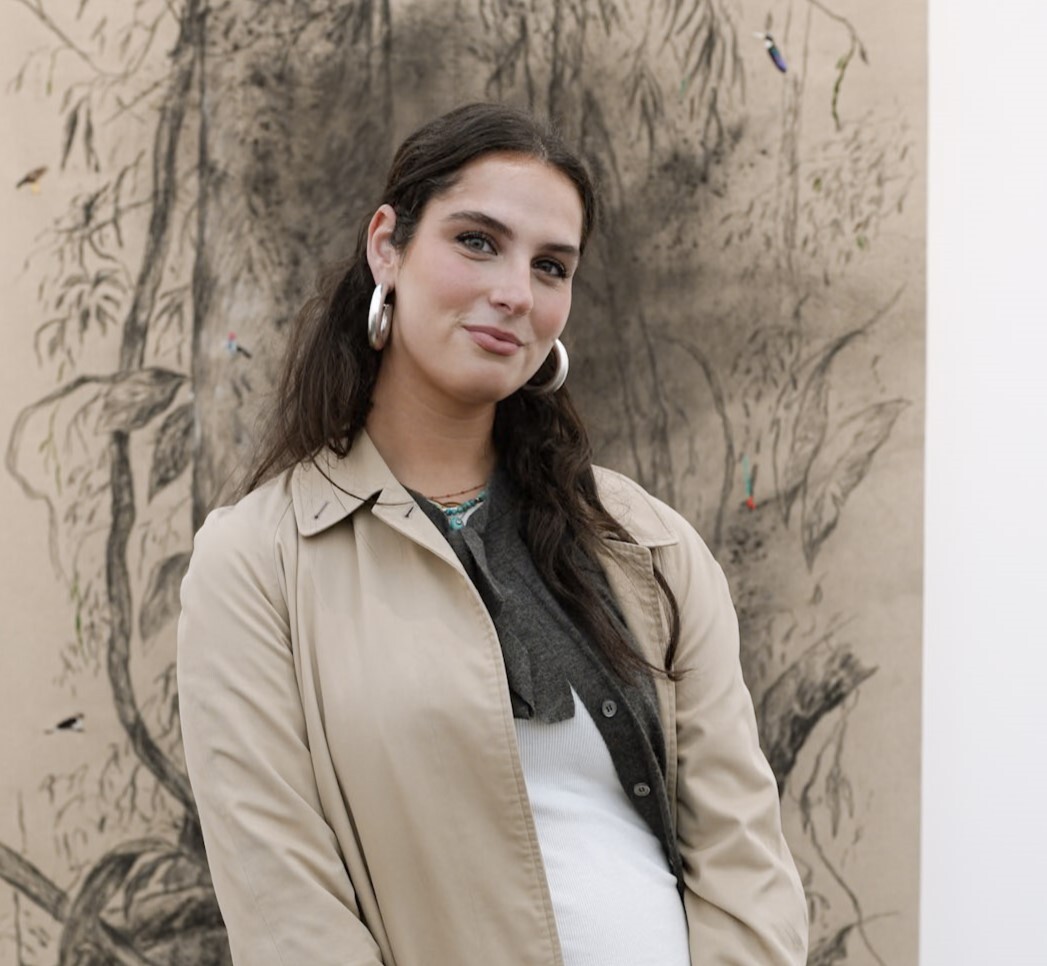
Maya Glantz is a Design Writer at Livingetc, covering all things bathrooms and kitchens. Her background in Art History informed her love of the aesthetic world, and she believes in the importance of finding beauty in the everyday. She recently graduated from City University with a Masters Degree in Magazine Journalism, during which she gained experience writing for various publications, including the Evening Standard. A lover of mid-century style, she can be found endlessly adding to her dream home Pinterest board.
